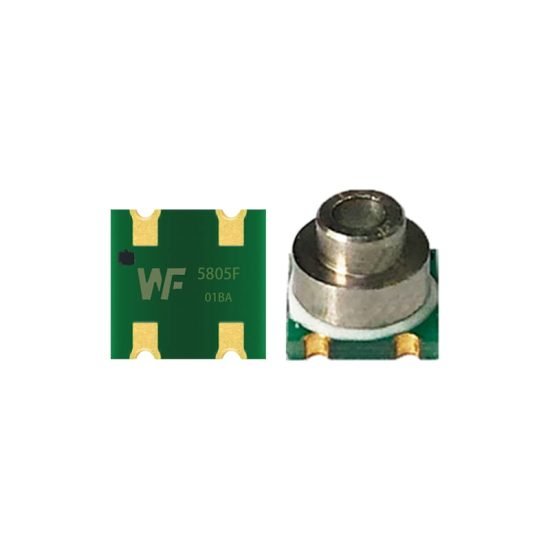In underwater conditions, pressure sensors (water-pressure / depth sensors) do more than give a depth readout. They monitor waterproof housings, help balance internal pressure, tune imaging settings and track motion. They provide reliable pressure data for system integration and can be fused with temperature, inertial sensors or sonar to better distinguish current disturbances from real depth changes.
Catalog
Depth measurement and depth positioning
Underwater cameras rely on water-pressure sensors to convert ambient hydrostatic pressure into depth data, with corrections for seawater or freshwater density differences. High-resolution depth feedback supports synchronising images with depth, which is useful for analyses like relating coral distribution to depth. Sensors should resist interference and respond in milliseconds so that even during rapid descents or rollovers they accurately capture depth traces and transient pressure spikes.

Pressure compensation and device protection
Sensors continuously monitor the pressure difference between the inside and outside of the waterproof housing. If internal pressure suddenly drops — a likely sign of a leak — the system can sound an alarm and shut down to avoid water ingress. During deep dives, dynamic adjustment of internal pressure via sealed chambers or valve control prevents the housing from deforming and protects lenses and electronics. To withstand seawater corrosion, sensor packages often use titanium, ceramic or anti-salt coatings, and ports are designed for splash and ingress resistance to extend service life and reliability.
Image quality optimisationection
Pressure affects light propagation and dispersion underwater. Depth information can feed camera algorithms to automatically tweak white balance, contrast and colour restoration — for example compensating for loss of red light at depth. Pressure feedback also helps focus: under high external pressure, lens mounts and mechanical supports may deform slightly; live pressure data enables micro-adjustments to autofocus parameters and lens calibration so images stay sharp across depths.
Underwater navigation and motion analysis
Pressure sensors record ascent and descent rates. Combined with an inertial measurement unit, they can reconstruct the camera’s vertical track and instantaneous speed, which supports path planning for ROVs or autonomous vehicles. In systems with adjustable buoyancy, pressure data can feed propulsion or buoyancy controls to maintain steady hover or aid obstacle avoidance. Sensor fusion helps tell short-lived current disturbances apart from genuine positional changes, improving navigation robustness.
Safety alerts and data logging
With preset pressure limits, sensors can trigger an emergency ascent or shutdown if thresholds are exceeded, protecting the camera from structural failure. Long-term pressure logs support durability analysis, maintenance decisions and incident investigation. Recording sudden pressure changes from currents or impacts also helps pinpoint abnormal events and informs housing strength testing.
Conclusion
From depth sensing to active protection and image optimisation, pressure (water-pressure / depth) sensors are a central environmental sensor for underwater cameras. Choosing high-precision sensors with corrosion-resistant packages and using sensor fusion improves device reliability and data quality, giving a steady pressure-sensing hub for marine imaging and underwater surveys.
The above introduction only scratches the surface of the applications of pressure sensor technology. We will continue to explore the different types of sensor elements used in various products, how they work, and their advantages and disadvantages. If you’d like more detail on what’s discussed here, you can check out the related content later in this guide. If you are pressed for time, you can also click here to download the details of this guides air pressure sensor product PDF data.
For more information on other sensor technologies, please visit our sensors page.


